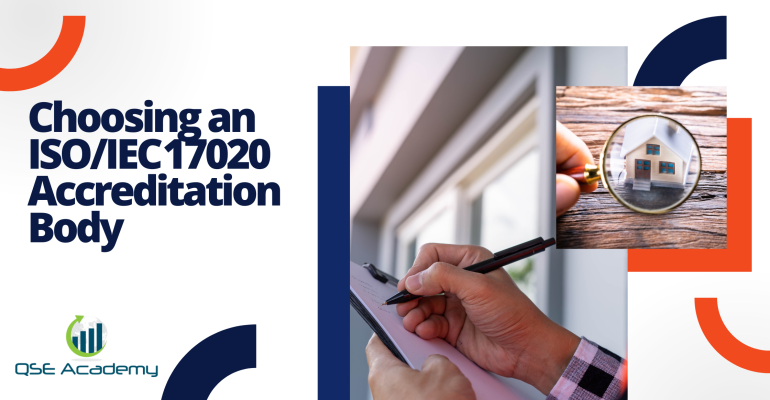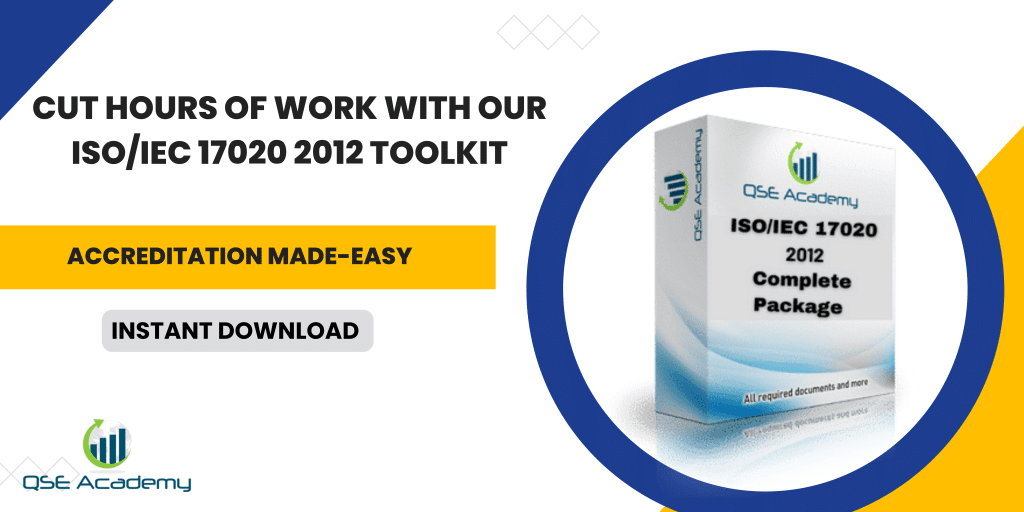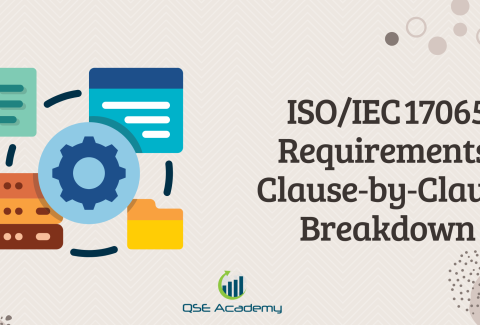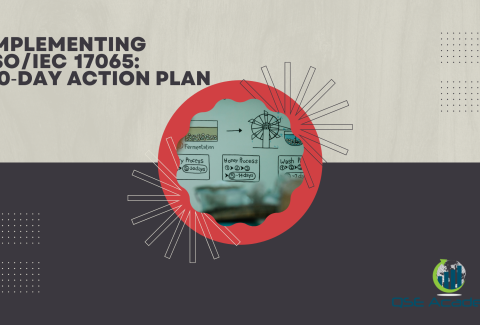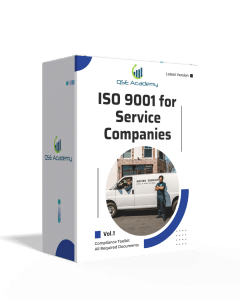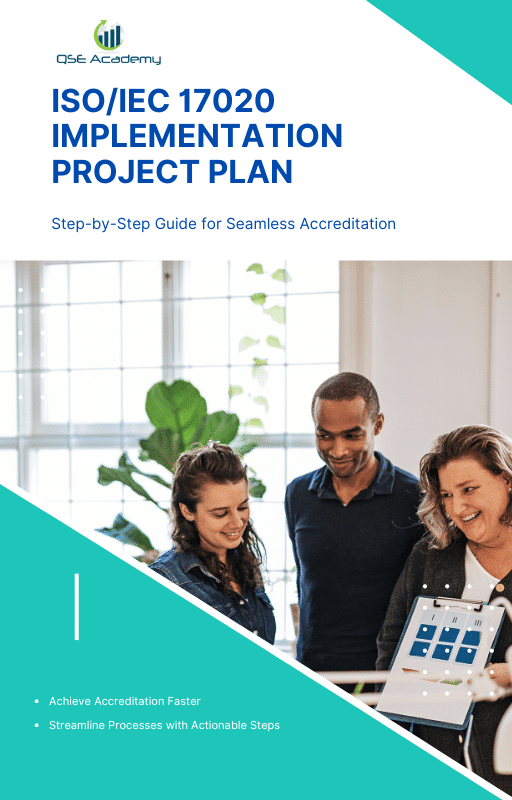Choosing an ISO/IEC 17020 Accreditation Body
Last Updated on October 22, 2025 by Hafsa J.
How to Choose the Right ISO/IEC 17020 Accreditation Body
Choosing the right ISO/IEC 17020 accreditation body can make or break your entire accreditation journey. I’ve seen inspection bodies spend months preparing their systems—only to lose time, money, and energy because they picked an accreditation body that wasn’t the right fit for their scope or market.
Here’s what most organizations get wrong: they assume all accreditation bodies are the same. In reality, each one operates under its own policies, pricing models, and technical focus. Some specialize in industrial inspection, others in calibration or construction; some are lightning-fast and responsive, others move at a government pace. Knowing these differences upfront can save you months of frustration later.
In my experience helping inspection bodies across different regions—Europe, Africa, and the Middle East—the best results always come from those who take time to evaluate and compare accreditation bodies before applying. The goal isn’t just to get accredited; it’s to get accredited by the right partner—one that matches your inspection scope, understands your sector, and offers recognition that truly matters to your clients.
In this article, you’ll learn exactly how to:
-
Understand the role of an ISO/IEC 17020 accreditation body and how it differs from a certification body.
-
Identify the key selection criteria that impact your long-term recognition, costs, and audit experience.
-
Compare local vs. international accreditation bodies, so you can make a decision that supports your business goals.
By the end, you’ll know how to choose an ISO/IEC 17020 accreditation body strategically—not just based on price, but on the value, credibility, and recognition that will carry your inspection body forward for years.
Understanding What an ISO/IEC 17020 Accreditation Body Does
Before you start comparing accreditation bodies, it’s important to understand what they actually do—and what they don’t.
An ISO/IEC 17020 accreditation body (AB) isn’t just an auditor or a consultant; it’s an independent authority recognized by government or international cooperation frameworks (like ILAC, the International Laboratory Accreditation Cooperation). Its main role is to evaluate whether your inspection body operates impartially, competently, and in compliance with the ISO/IEC 17020:2012 standard.
In simpler terms, the accreditation body verifies that your inspection results can be trusted—technically and ethically. Accreditation proves competence; it’s not about your documents looking nice, it’s about your system working reliably.
Here’s how the process typically looks:
-
Application Review – They review your scope, documentation, and readiness.
-
Document Evaluation – Assessors analyze your quality manual, procedures, and competence records.
-
On-Site Assessment – A team visits your facility, interviews staff, and observes inspections in action.
-
Technical Review & Decision – The AB’s internal committee reviews the findings and issues the decision.
-
Ongoing Surveillance – Annual or periodic visits confirm that your system continues to meet ISO/IEC 17020 requirements.
Table 1 – ISO/IEC 17020 Accreditation Body Core Functions
| Function | Purpose | Relevant Standard |
|---|---|---|
| Review of Applications & Scopes | Ensures your inspection field fits the AB’s recognized domain | ISO/IEC 17011 §7 |
| Evaluation & Assessment | Validates competence, impartiality, and management system | ISO/IEC 17011 §7.5–7.9 |
| Decision on Accreditation | Independent decision based on assessor findings | ISO/IEC 17011 §7.10 |
| Granting of Accreditation | Formal recognition of compliance with ISO/IEC 17020 | ILAC MRA Framework |
| Surveillance & Reassessment | Confirms ongoing conformity and performance | ISO/IEC 17011 §7.11–7.13 |
Pro Tip:
Always verify that your chosen accreditation body is an ILAC MRA signatory. That single detail determines whether your inspection reports are recognized internationally or only within your own country.
Common Pitfall:
Assuming every national or government agency offering “approval” is an accreditation body. Only ABs operating under ISO/IEC 17011 and recognized by ILAC or regional cooperations (like EA, AFRAC, APAC) provide internationally accepted accreditation.
Key Criteria for Selecting an ISO/IEC 17020 Accreditation Body
Choosing an ISO/IEC 17020 accreditation body is not a decision you should rush. The one you select will determine how smooth your accreditation process runs, how credible your certificate will be, and even how your clients perceive your inspection reports. From experience, I can tell you—picking the wrong one can cost you both time and reputation.
Every accreditation body operates under the same standard (ISO/IEC 17011), but they differ significantly in scope, expertise, responsiveness, pricing, and recognition. Below are the core criteria you should evaluate before deciding which AB to apply to.
Table 2 – ISO/IEC 17020 Accreditation Body Selection Criteria
| Criterion | Why It Matters | What to Check |
|---|---|---|
| ILAC-MRA Signatory Status | Determines international recognition and mutual acceptance of your reports | Check the ILAC website’s signatory list |
| Accreditation Scope Coverage | Ensures your inspection field (e.g., lifting equipment, NDT, construction) is within the AB’s recognized domain | Review published “Scope of Accreditation” directory |
| Assessor Technical Expertise | Impacts quality and depth of evaluation | Ask for CVs or experience summaries of assigned assessors |
| Accreditation Fees & Cost Transparency | Affects total project budget and predictability | Request detailed fee schedules and travel policies |
| Response Time & Scheduling Flexibility | Influences how quickly assessments are booked and completed | Ask for average lead time between application and audit |
| Language & Regional Presence | Reduces communication barriers and translation costs | Confirm supported languages and regional offices |
| Reputation & Client Feedback | Reflects credibility, responsiveness, and assessor professionalism | Seek testimonials from accredited organizations |
Here’s what I’ve seen in practice: a technically competent assessor can make the audit a constructive, even educational experience, while a poor match can turn it into a frustrating, box-ticking exercise. Accreditation is a partnership, not a transaction—choose accordingly.
Pro Tip:
When comparing accreditation bodies, create a scoring matrix (e.g., 1–5 for each criterion). Quantifying your evaluation brings objectivity to what can otherwise be a subjective decision.
Common Pitfall:
Focusing only on price. Accreditation is not just a purchase—it’s a credibility investment. A cheaper AB that lacks ILAC recognition or qualified assessors can end up costing far more if you need to re-accredit later under a recognized body.
Comparing Local vs International ISO/IEC 17020 Accreditation Bodies
One of the most practical questions inspection bodies face is:
Should we choose a local accreditation body or an international one?
I’ve guided organizations through both routes, and the answer depends on your market, client expectations, and long-term business goals—not just the initial cost. Both local and international ISO/IEC 17020 accreditation bodies have clear advantages and trade-offs. Understanding them helps you make a choice that supports your strategy rather than limits it.
Table 3 – Local vs International ISO/IEC 17020 Accreditation Body Comparison
| Factor | Local Accreditation Bodies | International Accreditation Bodies |
|---|---|---|
| Recognition Level | Recognized nationally or regionally | Globally recognized (ILAC MRA signatory) |
| Cost Structure | Lower assessor day rates and minimal travel costs | Higher fees due to international assessor teams |
| Language & Communication | Local language, easier coordination | English or multilingual, but may require translation |
| Assessor Expertise | Generalists covering multiple sectors | Specialized technical assessors for niche industries |
| Assessment Scheduling | May have long lead times due to limited staff | Often faster for international or high-demand scopes |
| Ideal For | Domestic projects and government tenders | Export-oriented or multinational inspection services |
| Ongoing Support | Easier for site visits and local follow-ups | Structured digital coordination, faster document handling |
Here’s what I’ve noticed:
-
Local ABs are ideal when your inspection body mainly serves national clients—especially if your market already recognizes that AB through government tenders or local industry regulations.
-
International ABs, often ILAC-MRA signatories like UKAS, ANAB, or IAS, are better suited for organizations whose inspection reports need global acceptance or cross-border recognition.
Example:
A small inspection body in Tunisia serving local clients might choose TUNAC, the national AB, for affordability and regional familiarity.
But a multinational company offering inspection services in multiple countries would benefit more from UKAS or IAS, since their accreditation carries international recognition under the ILAC MRA framework.
Pro Tip:
If your clients or regulators outside your country must accept your inspection reports, always choose an ILAC-MRA signatory AB. Recognition saves you from repeating assessments under different jurisdictions.
Common Pitfall:
Assuming “international” always means “better.” If your business operates locally, paying for a globally recognized AB may not bring extra value—especially if your clients already accept national accreditation.
Evaluating Accreditation-Body Policies, Processes, and Transparency
Once you’ve shortlisted a few potential ISO/IEC 17020 accreditation bodies, the next step is to dig deeper into how they operate. This is where many inspection bodies miss critical details — and later regret it.
Every accreditation body has its own policies, assessment process, and communication culture. Some are fully transparent with clear timelines and fee structures; others are bureaucratic, slow to respond, or vague about total costs until late in the process.
From my experience, the most successful applicants are those who evaluate the AB’s transparency and operational maturity before committing. You want a partner that communicates clearly, follows ISO/IEC 17011 principles, and respects your time and investment.
Table 4 – What to Review Before Choosing an ISO/IEC 17020 Accreditation Body
| Policy / Process | Why It Matters | What to Look For |
|---|---|---|
| Accreditation Rules & Procedure Manual | Defines the full process—application, assessment, decision, surveillance | Publicly available or provided upon request |
| Fee Policy & Cost Transparency | Prevents hidden charges for travel, reassessment, or extra assessors | Detailed breakdown with clear terms |
| Assessor Qualification & Assignment Policy | Ensures assessors are technically competent in your inspection field | Published assessor criteria or bios |
| Complaint & Appeal Procedure | Protects you in case of disagreement with findings | Clearly described process with defined response times |
| Confidentiality & Impartiality Policy | Guarantees your data is protected and conflict-free | Evidence of impartiality committee or review body |
| Lead-Time & Scheduling Policy | Affects your project planning and readiness deadlines | Typical timeframe between application and audit |
| Use of Accreditation Symbol / Logo | Clarifies brand use and marketing compliance | Consistent with ILAC-MRA and national rules |
Pro Tip:
Ask each potential accreditation body for an “Accreditation Information Pack.”
Most reputable ABs (like UKAS, ANAB, or ENAS) provide one automatically—it outlines the process steps, expected timelines, and fee schedules. If they hesitate or delay sharing such information, that’s an early red flag.
Common Pitfall:
Choosing an accreditation body that lacks published procedures or doesn’t clearly communicate its policies.
Opacity in the beginning often leads to surprises later—like unbudgeted reassessment fees or unexpected assessor substitutions.
Questions to Ask Before Choosing an ISO/IEC 17020 Accreditation Body
By the time you’ve compared a few accreditation bodies, you’ll probably find that they all sound similar—references to ILAC MRA, impartiality, and ISO/IEC 17011 compliance. But when you start asking the right questions, the real differences appear.
Before you sign any application or pay any fees, take time to talk with your shortlisted accreditation bodies. A 30-minute discussion can reveal how professional, organized, and transparent they really are. In my experience, inspection bodies that ask specific, informed questions always get better service, faster responses, and fewer surprises later.
Table 5 – Essential Questions to Ask Accreditation Bodies
| Question | Why It Matters | What to Listen For |
|---|---|---|
| 1. Are you an ILAC-MRA signatory for ISO/IEC 17020? | Confirms global recognition of your future certificate. | A clear “yes” with a link to the ILAC directory. |
| 2. Do you have experience accrediting inspection bodies in my technical field? | Ensures assessors understand your processes. | Examples of past accreditations in similar scopes. |
| 3. What is your typical ISO/IEC 17020 accreditation timeline? | Helps align your internal schedule and expectations. | A range (e.g., 5–7 months) backed by clear steps. |
| 4. What are your assessor day rates and travel-expense policies? | Clarifies total project cost and avoids hidden charges. | Transparent, itemized pricing. |
| 5. How soon after application can the on-site assessment be scheduled? | Impacts project planning and readiness. | An estimated lead time (e.g., 6–8 weeks). |
| 6. Do you offer remote or hybrid assessments? | May reduce cost and speed up evaluation. | Confirmation of scope eligibility and tools used. |
| 7. How do you handle corrective-action reviews after the audit? | Determines how quickly nonconformities are closed. | Standard timeframe (e.g., within 2–3 weeks). |
| 8. What support or guidance do you provide to new applicants? | Indicates customer service quality. | Availability of pre-assessment or advisory documents. |
Pro Tip:
Always request written confirmation—by email or official letter—of the points you discussed. Verbal promises are easy to forget; written clarity keeps everyone accountable.
Common Pitfall:
Asking only about costs and forgetting about recognition or technical coverage. The cheapest accreditation body is useless if its certificate isn’t accepted by your clients or regulators.
Case Examples – Choosing the Right ISO/IEC 17020 Accreditation Body in Practice
Theory is useful, but real examples show how the right (or wrong) choice of accreditation body can shape an inspection body’s success. Over the years, I’ve seen how factors like recognition level, responsiveness, and assessor expertise can completely change the outcome—even when both accreditation bodies looked identical on paper.
Below are two anonymized case studies that illustrate how different inspection bodies approached their ISO/IEC 17020 accreditation body selection, and what they learned in the process.
Case 1 – A Regional Inspection Body Choosing a Local Accreditation Body
Context:
A mid-sized inspection company specializing in construction and lifting-equipment inspections served only national clients. Most of its contracts came from public-sector projects that already recognized the national accreditation body (AB).
Decision:
They chose their local AB—a government-operated, ILAC-affiliated organization—because it offered:
-
Assessments in their native language.
-
Lower travel and accommodation costs.
-
A familiar regulatory framework.
Outcome:
The process took about six months from start to accreditation. The local assessors understood local safety legislation and inspection practices, making the audit practical and relevant.
However, when the company later pursued international clients, their reports weren’t automatically accepted abroad, prompting them to seek dual accreditation later under an international AB.
Lesson Learned:
If your market is domestic, a local AB is cost-effective and efficient. But if you might expand internationally, plan ahead—switching or adding an ILAC-recognized AB later requires time and extra expense.
Case 2 – A Multinational Inspection Body Selecting an International ILAC-MRA AB
Context:
A global inspection firm operating across North Africa and the Middle East needed a certificate recognized by clients in the EU and Gulf region. They compared two options: a regional AB and an international one (UKAS).
Decision:
Despite higher costs, they chose UKAS, primarily for:
-
Immediate recognition under the ILAC MRA network.
-
Highly specialized assessors experienced in oil & gas and NDT inspection.
-
Transparent process documentation and fast communication.
Outcome:
The entire process took seven months, but their certificate was immediately recognized by overseas regulators and clients, opening new tender opportunities. The higher upfront investment paid off within the first year.
Lesson Learned:
When your business model depends on global recognition, choose an international ILAC-MRA signatory AB—it expands your market reach and eliminates re-accreditation costs across countries.
Pro Tip:
Interview other inspection bodies in your field. Ask which accreditation body they use and why. Industry peers often provide the most honest feedback about responsiveness, assessor professionalism, and hidden costs.
Common Pitfall:
Choosing based on brand reputation alone. Even well-known ABs vary in responsiveness and technical depth depending on the assessor assigned to your scope.
FAQs – Selecting an ISO/IEC 17020 Accreditation Body
Q1: How can I verify if an accreditation body is ILAC-MRA recognized?
You can verify this directly through the ILAC official signatory database at www.ilac.org. Search for the accreditation body’s name and confirm that it’s listed under “Inspection (ISO/IEC 17020).” Only signatories under ILAC’s Mutual Recognition Arrangement (MRA) provide certificates that are internationally accepted.
Q2: Is it cheaper to choose a local accreditation body?
Usually, yes. Local accreditation bodies tend to have lower assessor rates and minimal travel expenses. However, their recognition might be limited to national or regional markets. If you serve international clients or export inspection results, the long-term value of an ILAC-recognized AB outweighs the initial savings.
Q3: Can I transfer my accreditation to another AB later?
Yes, but it requires coordination between both accreditation bodies and sometimes an additional assessment. The new AB will review your existing documentation, audit history, and scope before accepting the transfer. Transfers can take 2–3 months and may involve added costs, so it’s best to choose the right partner from the start.
Q4: How do I assess an AB’s technical competence?
Ask about the qualifications and industry experience of the assessors assigned to your scope. Competent assessors should have both technical expertise in your inspection field and auditing experience under ISO/IEC 17020. You can request anonymized CVs or case examples to confirm their background.
Q5: What are the early warning signs of a poor accreditation body choice?
-
Delayed or unclear communication during inquiry.
-
No published fee policy or accreditation procedures.
-
Vague answers about assessor qualifications or scheduling.
-
Lack of ILAC recognition or transparency about it.
If you notice any of these before applying, keep looking—reliability and professionalism at the inquiry stage predict how they’ll treat you later.
How to Choose the Best ISO/IEC 17020 Accreditation Partner
Selecting the right ISO/IEC 17020 accreditation body isn’t just a formality—it’s a strategic decision that affects your credibility, client trust, and global market access. The best AB for your organization is one that balances recognition, cost, and competence while aligning with your inspection body’s operational scope and long-term goals.
Here’s the bottom line:
-
Check ILAC signatory status first. It’s the foundation of international recognition.
-
Assess technical competence, not just reputation. A qualified assessor can add immense value during the audit.
-
Request transparency upfront. Ask for clear fee policies, process timelines, and assessor details before committing.
-
Match the AB to your market. Local ABs fit domestic contracts; international ABs fit global ambitions.
In my experience, inspection bodies that take time to evaluate and compare accreditation bodies start their ISO/IEC 17020 journey stronger and finish it faster—with fewer surprises and more credibility.
If you’re preparing to apply for accreditation, download QSE Academy’s ISO/IEC 17020 Accreditation Body Comparison Template or explore our Accreditation Readiness Toolkit—both designed to help you make a data-driven, confident decision about your ideal accreditation partner.
I hold a Master’s degree in Quality Management, and I’ve built my career specializing in the ISO/IEC 17000 series standards, including ISO/IEC 17025, ISO 15189, ISO/IEC 17020, and ISO/IEC 17065. My background includes hands-on experience in accreditation preparation, documentation development, and internal auditing for laboratories and certification bodies. I’ve worked closely with teams in testing, calibration, inspection, and medical laboratories, helping them achieve and maintain compliance with international accreditation requirements. I’ve also received professional training in internal audits for ISO/IEC 17025 and ISO 15189, with practical involvement in managing nonconformities, improving quality systems, and aligning operations with standard requirements. At QSE Academy, I contribute technical content that turns complex accreditation standards into practical, step-by-step guidance for labs and assessors around the world. I’m passionate about supporting quality-driven organizations and making the path to accreditation clear, structured, and achievable.

